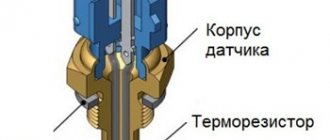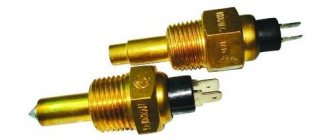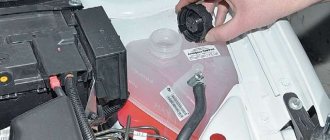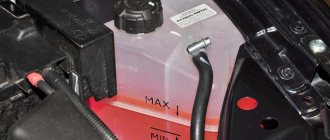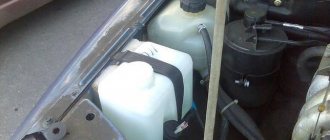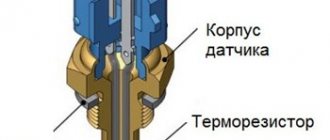Exhaust gases in your engine coolant are usually a sign of a blown head gasket or a cracked cylinder head. Continuing to drive your vehicle in any of these cases will quickly lead to complete engine failure. If you suspect that you have any of these problems, you should perform this test immediately. The test kit has been available at most auto parts stores for less than $50 since 2010. Testing for exhaust gases in your coolant will take anyone with basic auto repair knowledge less than 25 minutes to complete.
Tips
- A failed head gasket and cylinder head is often caused by another problem in the vehicle's cooling system, such as a severe blockage in the radiator or something else that is preventing the cooling system from operating at full efficiency. If you find exhaust gases in your coolant, inspect and repair the rest of the cooling system before performing head gasket or cylinder head repairs to ensure that new parts have not failed due to an old problem.
Signs of gases in the engine cooling system
The symptoms of gas breakthrough and liquid boiling are identical. However, there are also minor differences. It is at the initial stage that signs of gas breakthrough should be noticed.
- Gases leaving the combustion chamber accumulate first at the highest point of the combustion chamber. As a rule, this is the interior heater radiator. This means that the circulation of fluid in the interior heater radiator is difficult. As a result, the temperature of the supply air from the heater will gradually decrease. And in everything else. There will be no changes. Cooling system temperature is normal. No liquid will come out of the expansion tank. The only thing that will come out is a little pressure when you open the expansion tank cap. But you won't be able to define it as escaping gas. Because when heated, steam expands and creates a slight excess pressure in the system.
- If you look closely inside the expansion tank. You will see small air bubbles. These bubbles can appear in a variety of ways. They can occur when the engine is not yet warmed up. They may appear later, after the engine has warmed up.
Heater failure and bubbles already indicate a problem. Gas emissions. Increased pressure in the system. Increased pressure increases the boiling point of a liquid. Like a pressure cooker. That is, the temperature rises due to circulation disruption, but boiling does not occur. Due to a sharp drop in pressure caused by opening the lid of the vessel or rupture of the cup. Immediate boiling occurs. The liquid is thrown out under high pressure. Causes burns when opening the tank or radiator cap. If an increase in temperature is detected. Do not turn off the engine immediately. Let cool on low speed. The valve in the tank lid should release pressure gradually.
Exhaust gases and their normal color
Exhaust (exhaust) gases are formed as a result of the combustion of fuel in the engine cylinders, which are released into the atmosphere through the vehicle's exhaust system. The composition of exhaust gases largely includes nitrogen, oxygen, water vapor and carbon dioxide, and also contains various carcinogens in varying proportions, such as benzopyrene, soot and sulfur oxide.
Exhaust gases
When the engine is in good working order, the exhaust gases have a light gray, almost transparent color. This is subject to certain observation conditions:
- the engine is idling;
- the engine is warmed up to 60-70 degrees;
- Observations are carried out during daylight hours.
Steam or water droplets may be observed when the engine is not warmed up. This is a normal phenomenon associated with condensation inside the system and the way the catalyst operates.
There are three colors or shades of exhaust gases that indicate certain problems in the engine:
- White smoke;
- gray or blue;
- dark gray or black.
Sometimes the smoke may acquire a reddish tint as a result of the use of various additives or gentle washing, but this does not apply to malfunctions.
Black smoke from the exhaust pipe - causes, consequences and troubleshooting methods
The color of exhaust gases from a car muffler has always been the first indicator of problems with the engine or fuel supply system in the car.
Smoke from the exhaust pipe is one of the diagnostic options and tells the car owner what problems have already appeared or are just developing in various devices of the car.
Photo: CAR.RU
If black smoke comes out of the exhaust pipe, this indicates that the car urgently requires inspection by specialists with a high probability of needing subsequent repairs. If the machine exhibits the symptoms described above, its operation is strictly prohibited, as it may aggravate the current situation and lead to more serious consequences. The worst option is a major overhaul or replacement of the motor.
Causes of malfunction . The main reason for the appearance of black smoke from the exhaust pipe is excessive enrichment of the engine systems with a mixture of fuel and air, that is, too much fuel is burned in the combustion chambers of the cylinders per unit time. This moment indicates the presence of malfunctions in the fuel supply system, injection control or engine ignition. To verify the color of the exhaust gas, you can hold a piece of paper to the exhaust pipe or simply look at the smoke during daylight hours. A black trace of soot usually remains on the sheet, which indicates incomplete combustion of the fuel.
Other reasons for the appearance of black smoke from the exhaust system are:
- Air filter clogged
If this element is too clogged and is in poor condition, then the air passing through it does not completely, or does not at all, enrich the combustion chambers of the internal combustion engine. The consequence of the lack of air is that more oil enters the engine. The air filter should be replaced every 10-15 thousand kilometers.
- Problems with the carburetor
They are expressed in an incorrectly configured throttle valve or diffuser, or a malfunction of the float chamber and nozzle. The consequence is poor mixing of fuel with air and the engine receiving an insufficient amount of this mixture. The result will be the combustion of a large volume of fuel without air, pressing on the valves with increased force and causing the formation of black smoke. Such a malfunction can only be determined through diagnostics at a service station.
- Incorrect spark plug gap adjustment
In such a situation, the coil does not produce a uniform spark supply, that is, it disappears when the gap is too high and is formed in large quantities when the gap is too low. This moment causes accelerated failure of parts in the ignition system. According to factory settings, the gap is from 0.9 to 1.1 mm and should not have any other value.
- Incorrect valve clearance adjustment
Causes accelerated wear and reduced engine life. To eliminate this, a thorough diagnosis of the engine should be carried out, since parts quickly become unusable due to friction against each other.
These are the most common reasons why black smoke comes out of a car's exhaust pipe. If such a malfunction is detected, it must be eliminated as soon as possible so as not to lead to serious consequences.
What to do when we smell exhaust fumes?
The problem of bad odor coming from the vents can be seen immediately after starting the engine. In this case, immediately contact a mechanic or check the condition of the flexible connector. Driving with such a problem is dangerous, so for now it is better to choose public transport or a taxi.
However, if you notice a suspicious smell of exhaust gases while driving, for example at a traffic light, make sure that the cabin is ventilated. Turning on the ventilation will not help, so you should open the rear windows or the sunroof. Don't hesitate to visit a mechanic and head to the workshop immediately. The problem may not be fixed on the spot, but it is better to leave the car for repairs for a few days rather than risk your own health.
Why does a gasoline engine smoke a lot when cold?
There are several reasons for emissions when starting a car. Basically, the problem is not related to the fuel system, but to the operation of the power plant.
The valve stem seals have hardened
These guide bushing sealing parts do not withstand temperature fluctuations well. Over time, they become deformed and do not prevent oil from entering the cylinders. The grease burns when the engine starts and produces blue exhaust. After the machine warms up to operating temperature, the caps return to their shape and close the gaps again.
Piston rings are stuck
There are grooves on the surface of the cylinder rod in which special seals are located. They are responsible for sealing the combustion chamber and maintaining the required level of compression. When carbon deposits or coke accumulate in the grooves, the rings located there lose mobility, fit and stop closing the gap between the cylinder walls and the piston.
As a result, lubricant penetrates into the engine and the level of compression in the combustion chamber decreases. The on-board computer, reacting to weak traction, increases the enrichment of gasoline, which leads to exhaust emissions on a cold start.
Incorrectly selected engine oil
Worn engines have large gaps between the cylinder walls and pistons. If you use liquid oil, it will quickly seep into the combustion chamber before the compression rings close the gaps when the engine warms up. Therefore, you need to use a thick lubricant. Be sure to take into account the manufacturers' recommendations.
Sometimes it happens that a liquid of suitable viscosity is poured in, but strong smoke remains from the exhaust pipe in cold weather. In this case, the problem is low quality oil.
Condensation in the exhaust
In this case, it is the evaporation of moisture when the car warms up. The process is accompanied by streams of water from the muffler. The amount and density of steam depends on the ambient temperature, the volume of accumulated water, the frequency of operation of the vehicle and the type of catalyst.
Engine sensor malfunction
The power plant of modern cars is regulated by an electronic system. Its control unit receives signals from antifreeze temperature and air flow sensors.
Car malfunction, smoke from muffler
When the sensors are faulty, the ECU will not be able to correctly control the fuel supply. The fuel is over-enriched. After the engine warms up, the problem disappears, as the excess gasoline burns out.
Smoke after major repairs
The defect occurs during engine assembly. This is explained by the grinding in of parts. They let oil into the combustion chamber when starting the car due to increased gaps. After warming up, the gaps disappear. But, if the pipe continues to smoke, this indicates poor quality maintenance. Most likely an error was made during engine assembly:
- when boring a cylinder block;
- installing piston rings on the wrong side;
- missed crack in the cylinder head seat.
To avoid such problems due to inexperienced mechanics, the engine should be repaired in official large auto repair shops.
How to detect ventilation problems
When the ventilation system becomes clogged, gases stop being released normally. Resinous deposits form, interfering with the removal of vapors. The following manifestations of the problem are possible:
- Leaks and excessive oil consumption.
- The oil in the sump can be sucked in through the valve. This leads to valve deformation.
- Possible engine smoke.
- Deterioration of engine dynamics.
- Extraneous sounds in the valve and intake manifold area.
- The idle air control and throttle valve become dirty too quickly.
- If the system is severely clogged, crankcase gases pull out the dipstick.
Leak from car exhaust system
The most common cause of exhaust fumes entering the cabin is a leak in the exhaust system near the engine compartment. The air that gets inside is sucked in around the pit, so in some situations it can mix with the air in the engine compartment. This is especially noticeable when the car is turned off, when the air pulse is not blowing around the car and releasing exhaust fumes from the engine compartment.
But how do exhaust gases get into the engine area?
There can be many sources of leaks. It happens that the smell of gasoline in the cabin, and not exhaust gases. They may already leak through the exhaust manifold gasket or other connections (for example, the catalyst or central muffler). It is also worth paying attention to welding cracks and holes in the exhaust system. However, a common culprit is the exhaust flex pipe just behind the catalytic converter. It is curved and designed to absorb stress from the exhaust system. Unfortunately, it often rusts and, as a result, breaks.
All types of exhaust leaks are usually accompanied by a loud metallic hum, so identifying the problem is quite easy. If you notice disturbing noises at the front of your exhaust pipe, don't ignore them. It is necessary to close the element or replace it with a new one before exhaust gases enter the passenger compartment.
How does a good engine work?
A 100% working 4-stroke diesel engine, regardless of the mode (idle or under load), receives the correct portion of fuel at the right time. During the ignition process, the diesel engine is completely burned, transferring maximum energy to the piston system. The remaining gases are released from the exhaust system.
If the power unit is correctly configured and all systems are functioning correctly, the diesel engine produces slightly transparent exhaust. In winter, white (clear) smoke may come out of the exhaust pipe, which is condensation and is normal. The process goes like this:
- The liquid condenses while the car is parked.
- After starting the power unit, one part of the condensate comes out in the form of water droplets and accumulates at the outlet of the exhaust system, and the second evaporates.
- After the power unit reaches the desired temperature, the water and condensate leave.
The exception is operation in cold weather. The stronger the frost, the more active steam is formed, and the slower the heating of the exhaust system occurs. That is why such exhaust is normal in winter.
Causes of white smoke in winter
At sub-zero temperatures this happens either due to the natural evaporation of condensate. If after warming up the car continues to smoke, it means antifreeze has leaked.
Worn seals
To prevent coolant from penetrating into the cylinders, gaskets called oil seals are installed on the engine. Over time, these seals become deformed and do not close well the gaps that appear when the engine warms up. If low quality antifreeze is used, this will accelerate the wear of the seals.
Cylinder block deformation
During engine operation, the piston is subjected to maximum load when the O-ring stops at its highest point. This is where the seal is broken.
In the middle, the cylinder can become deformed and take the shape of an ellipse. As a result, gaps are formed through which antifreeze flows into the engine.






